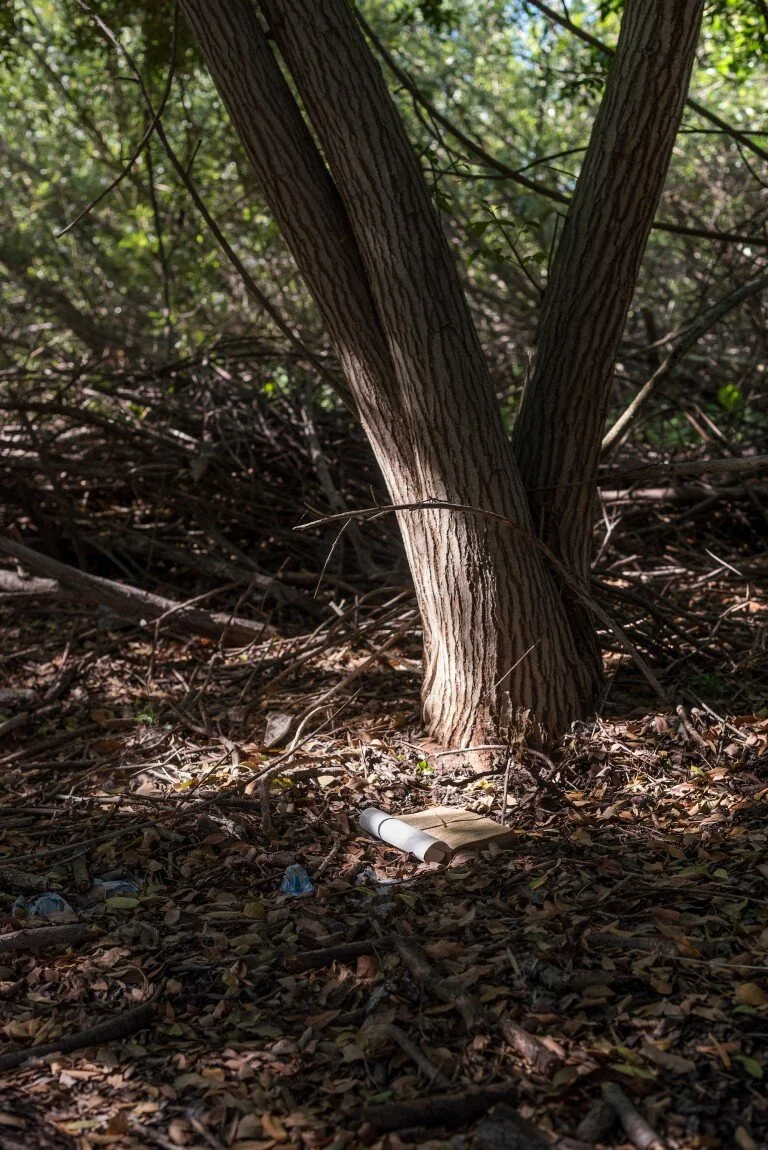GEMA GALIANA
PHOTOGRAPHY
What the Final Moments of Homeless People Can Teach Us
This photo essay won for Capital & Main the second prize at the 60th annual Southern California Journalism Awards.
And one of the photos won the first place for an image in INN Impact Prize for Nonprofit News Photos honoring photographers for their work in 2017.
This photo essay was produced with the support of the Economic Hardship Reporting Project c
Co-published by :CAPITAL AND MAIN , OC WEEKLY and TALK POVERTY
Text by Amy DePaul.
PEDRO SAJCHE CHAN, 31
He died after jumping from the First Street Bridge to the Santa Ana riverbed, a partially paved waterway connecting inland counties and the coast. Chan is one of eight people in 2015–2016 to die near the river, where the homeless population has mushroomed to as high as 500 people. Paul Leon, the CEO of the Illumination Foundation, a homeless assistance organization, remembers working the riverbed as a public health nurse more than a decade ago, when there were only a dozen people there. Now, Leon says, “You have a core of about 150 chronically homeless individuals. They’re the anchors.” Placing them in permanent housing will disperse the gatherings, he adds, and “the sooner you start that ball rolling, the better.”
ESSE CARRASCO, 54
He died in front of One Ice House in Santa Ana, a dry ice supplier. Carrasco was the victim of heart disease, though he also had a brain injury. He was one of the regulars who at the time slept along the business-lined street where his body was found. After his death, neighborhood workers paid tribute with candles and flowers. Sidewalks are among the everyday places in which chronically homeless people die—unlike the 80 percent of Americans who spend their final moments in hospitals and nursing homes. Other Orange County death sites in 2015 included a storm drain, a Taco Bell, the Pacific Ocean, a bus terminal, and motels. About a third of the deceased homeless people that year died in a medical facility.
RACHAEL MAE LANE, 33
She was discovered on an embankment behind San Clemente High School’s sports fields. Pregnant and at full-term, Lane died from complications of a ruptured uterus. “In the developed world? My goodness,” says Dr. Kushel. “Women dying of uterine rupture is pretty uncommon if they are getting regular health care. That’s one of the things that an OB-GYN would watch for.” Lane was originally from Appalachia, Virginia, which has a population of under 2,000. Her funeral home obituary says she was survived by three children but preceded in death by two. The infant discovered upon her death, Callie Victoria Snodgrass, was referred to in the obituary as Lane’s “unborn angel.”
LEROY JONES, 93
He was the oldest homeless person to die in Orange County in 2015, passing away in a Cypress motel from an enlarged heart and emphysema. Jones is an outlier among homeless people, whose life expectancy is far shorter than that of the general population. “Not a lot are making it past 65,” says Boston physician Travis Baggett, who treats homeless patients and researches their health. Those like Jones who live longer might offer clues to longevity for the rest of us. “The oldest homeless people are hardy survivors. They are special, different in some way.” It’s unclear if Jones’ emphysema was a result of smoking, though smoking is often a cause. Baggett calls tobacco the “overlooked addiction” among homeless people, who smoke at rates three times higher than the general population.
JERRY BODINE, 64
He died on a walkway in front of the First Methodist Church in Santa Ana, the victim of heroin and alprazolam intoxication, the latter drug often going by its brand name, Xanax, which is commonly used to treat anxiety. Medical trends across the general U.S. population, such as increased opioid abuse and reduced white male life expectancy, appeared first among homeless people, and studying death among the homeless can yield insights into the health trends of the population at large. “I have always considered the homeless to be canaries in the coal mine of public health,” explains the Boston physician Travis Baggett, who studies homeless health issues. “Life expectancy has gone down for white men for the first time ever. We saw that here. Drug overdose, we saw that here. You hold a magnifying glass up to a problem and see it earlier and more dramatically in the homeless population.”
DEREK PETER, 46
He committed suicide by hanging himself from the Balboa Pier in Newport Beach, in late 2015. His former wife, Abigail Lanin Eaves, remembers him as a tormented man who began to show signs of being bipolar just after their honeymoon in 1996. They soon after separated and divorced, though in recent years he repeatedly tried to reconnect with her and their son on Facebook. Now the executive director of a birthing center in Albuquerque and a certified midwife, Eaves was making eggs one morning when she got a call originating in Southern California. “I had this odd feeling. As soon as [the caller] said she was from the Orange County Sheriff’s Department, I said, ‘Oh God, Derek’s dead.’ She said, ‘How did you know?’”
JANELLE BIXLER-MAUCH, 56
She died on a bench in front of a Lake Forest laundromat; this photo shows the markings where the outside bench presumably stood before it was removed. Her cause of death was a blood clot. In an online tribute, a friend, Julie Glasser, wrote that Bixler-Mauch worked as a property manager for 20 years, had children and grandchildren, and possessed a feisty, lively nature as well as a love for her Catholic faith, her Chihuahua, and many interests, including crafts and tattoos. Glasser lamented her friend’s loss but said, “If I remove all the selfish thoughts I can say that I am happy that God had a better plan for you … You won’t suffer another day.”
ALBERTO GONZALEZ, 62
He died of coronary artery disease in front of the wall outside a Santa Ana mercado called Tia Market. A customer who stumbled onto Gonzalez that day ran into the store and alerted store employees, who then called 911. That wall had been a gathering place for homeless people because of a shade-bearing palm tree, which store owners had removed, leaving the stump still visible in the photo.
JONATHAN POWELL, 31
Powell was discovered next to a dumpster by a restaurant employee at Katie’s Munchies, having died from a heroin overdose in Westminster. Homeless people are known to sleep in the restaurant’s dumpster area, which is mostly enclosed by a cinder block partition. While older homeless people die of common natural ailments, “The 25- to 44-year-olds are being ravaged by drug overdose,” says Dr. Baggett.
KENNETH BAKER, 43
He was found in the bushes by a jogging trail in Newport Beach’s scenic Upper Newport Bay Nature Reserve, a quiet enclave surrounded by busy streets. Baker died of an infection of his heart valve. He also suffered from cellulitis in his toe, which is a painful bacterial infection that destroys tissue and is common among homeless people, among other foot disorders such as athletes’ foot, gangrene, trench foot, and unmended broken bones. Causes include diabetes, lack of hygiene, bad shoes, injuries, and constant walking or standing. A recent Canadian study showed that two-thirds of homeless people have foot problems at any one time.









